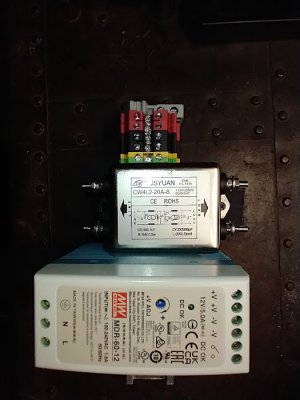TorontoBuilder
Sapientia et Doctrina Stabilitas
so back to this:I mean the one that makes it go forward or reverse. On the 1440, there is a VFD on the 3 phase. I still use the gears because on the old style controller, did not even know it was variable. Would it be simpler to just put a 3HP 3 phase with the VFD converter on and simply a switch for forward and reverse, Maybe the Main on and off also?
Is it not possible to just put a larger motor on, possibly up to 5 HP single phase up to 20 amps? and simply have the lever turn it on and off. Why does it need all the electronics? Could the frame support more HP? The ability to take larger cuts. Just shooting this out there....
The answer is not really.
Because that lever activates interlocked micro-switches that control the low voltage going to the two interlocked contactors... this is a safety feature.
Now in my conversion I simply removed the existing control wiring and then wired the two interlocked spindle direction micro-switches up to the Forward, Reverse and common ports on my new VFD instead.
You cannot wire 220 volts to those switches as if they were a high voltage drum switch.
So no. Not how you intend

